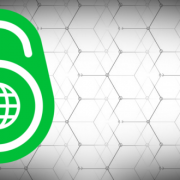IPv6 Day 2016
Today is IPv6 day. IPv6 day aims to evaluate and promote public IPv6 deployment as it was designed to eventually completely replace IPv4.
We embrace IPv6 technology at Dogsbody Technology and want to help promote it, so we thought we’d write a blog post telling you why we think it’s great.
But first, what is IPv6?
IPv6 was invented to address the issue of IPv4 exhaustion. It allows for a much larger number of IP (Internet Protocol) addresses, which is what computers use to identify and communicate with one another over the internet. Once all of these addresses are taken, no one new would be able to connect to the internet. There are around 3.7 billion public IPv4 addresses, which are now virtually exhausted due to the ever growing number of computers and people who are connected to the web. Compare this with roughly 340 undecillion, or 340 trillion, trillion, trillion that you get with IPv6.
With IPv6 every human on the planet could use billions of addresses a second and we’d still not run out.
An IPv6 address is written differently and so needs different DNS records. If you do a DNS query on www.dogsbodytechnology.com you will see two responses. A traditional A record that includes the IPv4 address and a new AAAA record that shows the IPv6 address:
www.dogsbodytechnology.com. 900 IN A 139.162.200.233
www.dogsbodytechnology.com. 900 IN AAAA 2a01:7e00::31:9003
IPv4 Addresses are in the format “ddd.ddd.ddd.ddd” where each “ddd” ranges from 0-255.
IPv6 addresses are in the format “hhhh:hhhh:hhhh:hhhh:hhhh:hhhh:hhhh:hhhh” where each “h” is the value 0-15 written in hexadecimal.
IPv6 addresses can also be shortened so that leading zeroes can be removed (like IPv4) and consecutive blocks of 0000 can be replaced by a double colon (::) e.g.
2a01:7e00:0000:0000:0000:0000:0031:9003
2a01:7e00:0:0:0:0:31:9003
2a01:7e00::31:9003
There are lots of fantastic guides explaining how computers understand and use these addresses that will do a much better job of explaining than we could hope for in a small blog post.
Advantages:
- Won’t run out.
- Routing is more efficient.
- Makes address allocation and network management simpler.
- Improved end-to-end connection, helping things such as file sharing and online gaming.
Disadvantages:
- Makes addresses harder to remember for humans.
- Can make it easier to track an individual’s use of the internet.
- New hardware may need to be purchased.
- It’s going to take a long time to transition fully.
Some of the above disadvantages are lessened and/or avoided with the use of a dual stack (running IPv4 and IPv6 side-by-side)
Regardless of the down sides, we’re big fans of IPv6, and all of our servers use it where possible.
There is even a chance that you’re using it right now to view this website. Contact Us if you want to make sure future visitors can access your site over IPv6.





Leave a Reply
Want to join the discussion?Feel free to contribute!